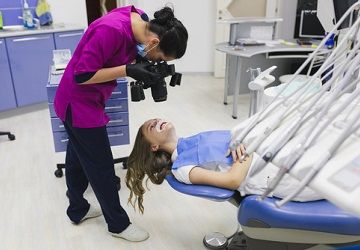Use Dental Photography to Enhance Your Practice
Scott Cairns, DDS, says that dentists can use digital photography to be a tour guide of sorts for the mouth: showing, rather than telling patients what the issues are. This can lead to increased case acceptance.

A picture is worth a thousand words. But in the case of dental photography, a picture could be worth a great deal more — such as increased case acceptance, and enhanced doctor-patient relationships.
Dental photography is not new. Scott Cairns, DDS, of Colorado-based Fountain Modern Dentistry and Orthodontics, says that dentists have been using photographs to document cases for decades. The challenge back in the day was waiting a week or two to have the images developed.
“And then hoping that you got all the pieces to the puzzle well documented so you could use it in case presentation,” Cairns says.
But digital photography has changed the playing field.
Numerous Benefits
Cairns says that in addition to documentation, dental photography can be used as a patient education tool. In years past, dentists would take photographs of a patient’s mouth, and the patient would be invited back for a consultation with the dentist using the large, glossy prints as a way of explaining the patient’s case. Digital photography, however, has made this process much more efficient.
“The benefits are tremendous,” Cairns says. “Universally, patients are curious about themselves. And when they see themselves they want to learn more.”
Of course, there are patients who are embarrassed of images of their mouth, so it’s important to be cognizant of that and provide them an opportunity to review the images on their own terms.
“But in general, patients love to learn about themselves,” he says. “I think that’s part of the human condition. We’re curious, and when we see a part of ourselves from a different point of view than we have ever looked at before, it’s fascinating. And that fascination lends itself to a conversation.”
That conversation, rather than the dentist pointing to a bad crack in a tooth that requires repair, enables patients to connect the dots on their own. And the conversation can lead to a discussion of how the break may have occurred, and what habits the patient has that may have contributed to the break.
“That’s how I use (digital photography) in my practice, as opposed to it solely being patient education,” Cairns says. “I think it lends itself to credibility and trust, which is one of the things that greases the skids towards case acceptance, especially in new patients.”
Tour Guide
Cairns says using digital photography enables the dentist to play the role of tour guide in a process called co-discovery. That’s where the patient and dentist learn about the patient’s mouth at the same time. And the easiest way for that to happen is to go on a journey with the camera in hand. Cairns says it’s like being the tour guide at a museum.
“You can walk around the museum and read everything and pass by things that might be interesting, but you don’t know that it’s interesting,” he explains. “But if you have someone there to tell you a story of what’s going on in your mouth and involving you, it becomes a richer experience. It leads to a richer conversation.”
Cairns acknowledges a learning curve in digital photography, but says it’s not that steep. The bigger challenge, he says, is getting used to the process of using the technology. For many dentists, if the tool isn’t accessible right at the moment and they’re not set up for it, it becomes too difficult to incorporate into an already busy day. But if it’s handy and you begin practicing with it, the transition is a quick one.
“And, you can train or have your assistants trained to use it.”
The Pay-Off
A decent camera doesn’t cost an arm and a leg, Cairns says.
“It’s within everybody’s reach,” he adds. “It’s not a luxury item. It’s something any office can get a return on.”
The difference between a good camera and the best in price point is not great, Cairns says. And he stresses that the key is not so much about the cost of the camera as it is the capabilities.
“If all you all you want to do is use it as a patient education tool, you could probably go with a lower-priced camera,” he says. “But if you also want to get the benefit of using it as a lab communication tool, then you’re going to need a camera that can be color balanced so that you can get true color, so the lab can use it to get the details it needs.”
So think through how you plan to use the camera, as well as how committed you are to using it.
“It’s not a difficult skill to learn, but it does take time,” Cairns says. “And like everything it takes deliberate practice to get good at it. But, once you get good at it, it’s easy to do if the system is set up well.”